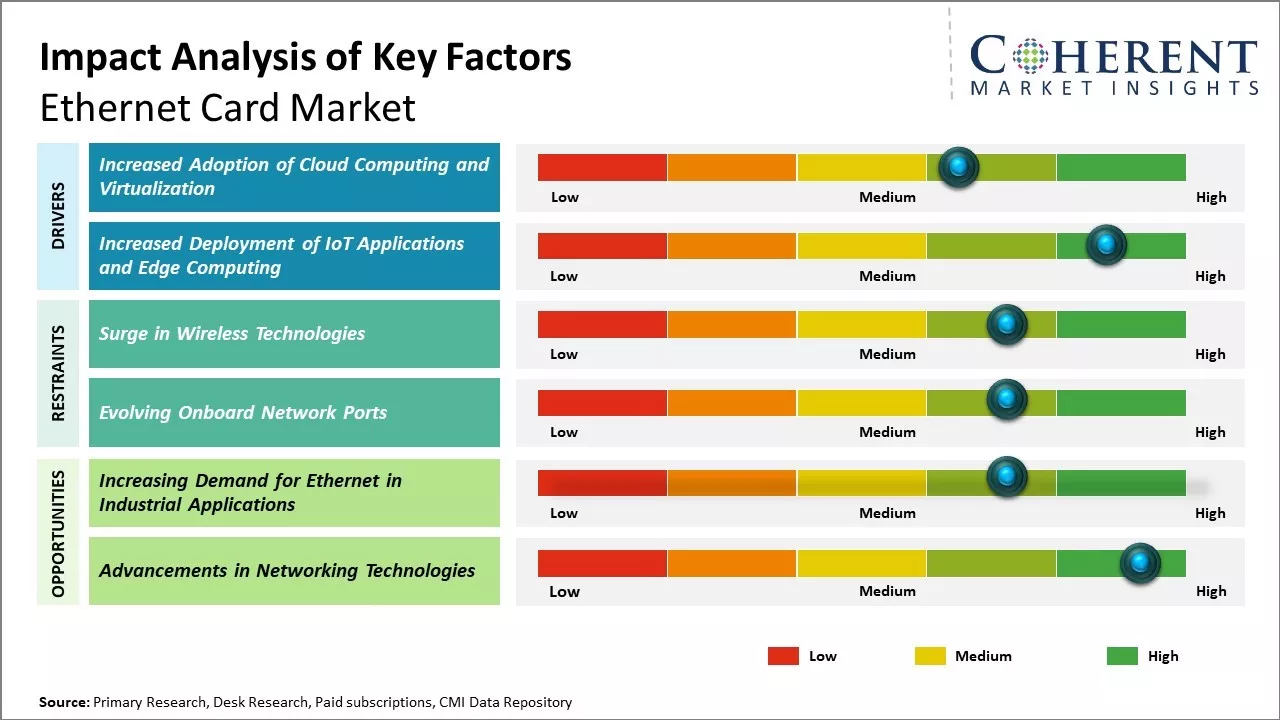The Ethernet Card Market is estimated to be valued at USD 7.45 billion in 2025 and is expected to reach USD 13.90 billion by 2032, exhibiting a compound annual growth rate (CAGR) of 9.3% from 2025 to 2032.
The Ethernet card market is experiencing steady growth driven by increasing demand for higher connectivity speeds across industries.

To learn more about this report, Request sample copy
Factors such as the development of smart applications and adoption of advanced technologies such as autonomous driving, industrial IoT, and AI are fuelling the need for high-speed connectivity. Furthermore, the faster adoption of 5G networks globally is also augmenting demand for high-speed Ethernet cards to support connectivity requirements of various end-use verticals. Growing network infrastructure and transition towards cloud-based applications offer lucrative opportunities for vendors in this market.
Increased Adoption of Cloud Computing and Virtualization
As businesses across industries increasingly adopt cloud computing and virtualization technologies, the demand for high-performance Ethernet cards is expected to rise significantly. With cloud and virtual environments allowing businesses to flexibly spin up and manage virtual machines on-demand, there is a growing need for network interface cards that can support numerous simultaneous connections and handle high-bandwidth tasks. Ethernet network adapters play a vital role in enabling seamless connectivity between physical and virtual devices, delivering high-speed data transmission for storage access, inter-VM communication, and other performance-intensive operations.
A major factor driving this transition is the cost advantages that cloud and virtualization provide. Migrating IT infrastructure and applications to the cloud allows smaller and medium enterprises to eliminate upfront capital expenditures on expensive hardware and shift to an operational expenditure model. It also relieves them of the responsibilities of managing physical servers and other infrastructure. For larger enterprises, virtualization offers improved hardware utilization through server consolidation. This translates into significant savings on power, cooling, and real estate costs associated with data centers. As more workloads shift to virtual and cloud platforms, there will be a growing need for Ethernet cards with advanced features like SR-IOV, VM queue support, and robust switching capabilities to enable high-speed networking between large numbers of virtual machines and cloud instances.
According to stats from the UN Broadband Commission's 2021 report on the socioeconomic benefits of connectivity, the global IP traffic grew by 26% in 2020 alone and is projected to grow nearly threefold between 2020 and 2025.
Joining thousands of companies around the world committed to making the Excellent Business Solutions.
View All Our Clients